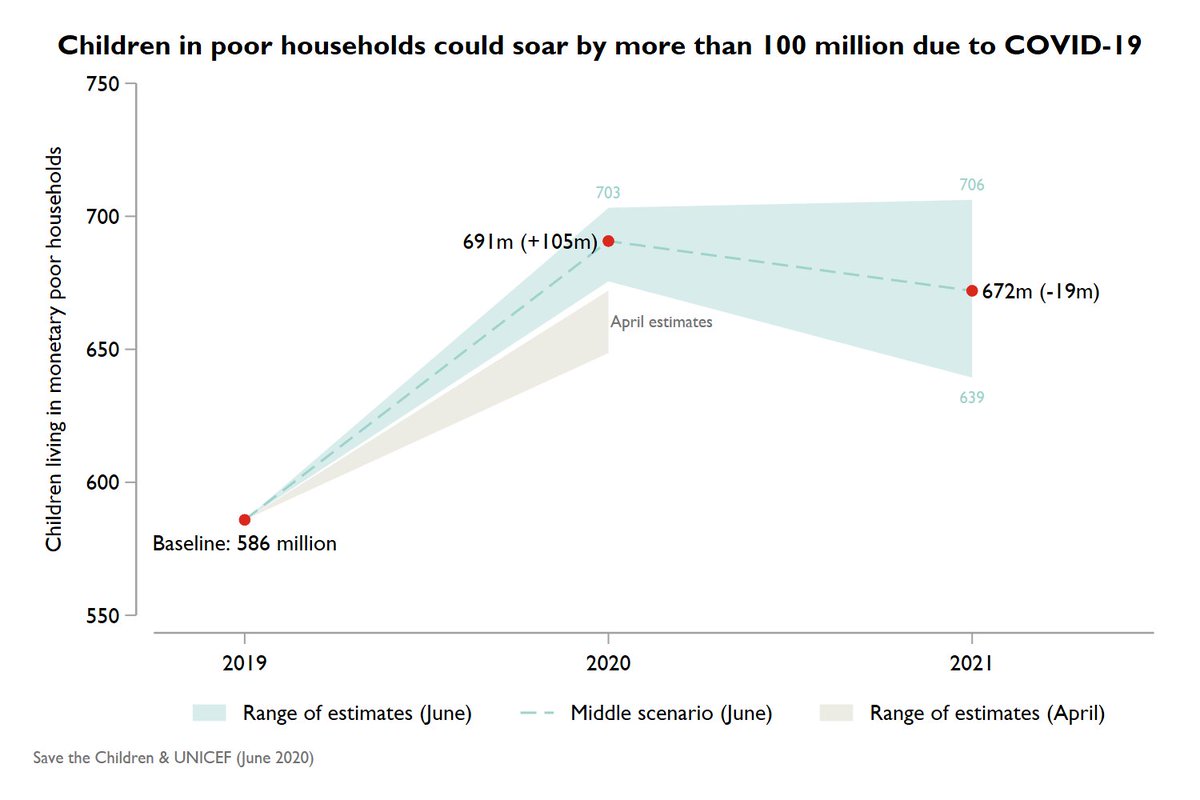New projections on economic impact of #COVID19 allow us to update earlier @save_children & @UNICEFData estimates on children living in monetary poor households. They show an even gloomier picture: number in 2020 could soar between 90 to 117 million. 1/n https://www.savethechildren.org.uk/blogs/2020/coronavirus-invisible-victims-children-in-monetary-poor-househol
For the first time, we are also able to look ahead to 2021 (with significant uncertainty). It suggests that this year’s increase in numbers is mostly here to stay. Even in the best-case scenario, we expect a reduction in 2021 which is less than half the increase in 2020.  2/n
2/n
 2/n
2/n
As usual, prospects for different world regions vary. We are expecting the largest absolute increases in South Asia and Sub-Saharan Africa, but it is in Europe & Central Asia and Latin America & Caribbean where we might see the largest changes in the prevalence rate. 3/n
We do measure poverty using national poverty lines. In our methodology we distinguish between income effect (GDP downturn) and distribution effect (changes to income distribution). Besides income, we need to measure #childpoverty multidimensional - more on this to come. 4/n
These estimates are call to action – governments have a range of policy options to mitigate shocks of the pandemic on families and children (programmatic responses in education/health, broader fiscal policies...). E.g. child benefits @WrightYolande https://www.savethechildren.net/blog/coronavirus-crisis-highlights-need-child-benefits-globally (5/n)
Finally, this and new evidence on the impact of #COVID19 on children's rights to survive, learn and be protected is now part of our updated live tracker by @ChiaraOrlassino and me. (6/6) https://www.savethechildren.org.uk/blogs/2020/the-changing-face-of-covid-19-a-live-tracker-of-its-impact-on-children

 Read on Twitter
Read on Twitter



